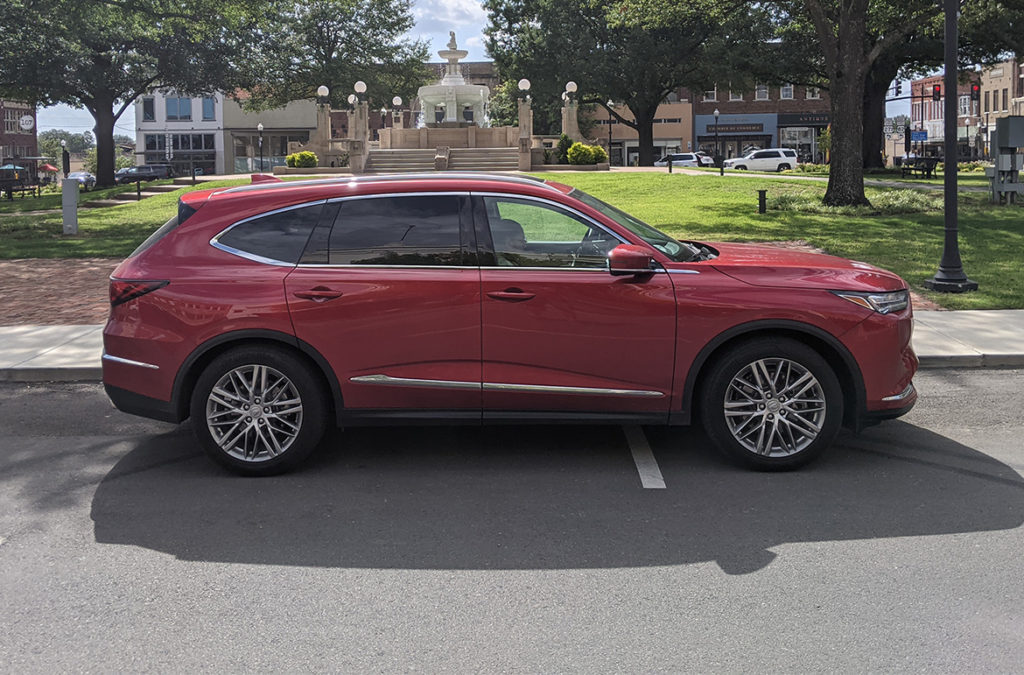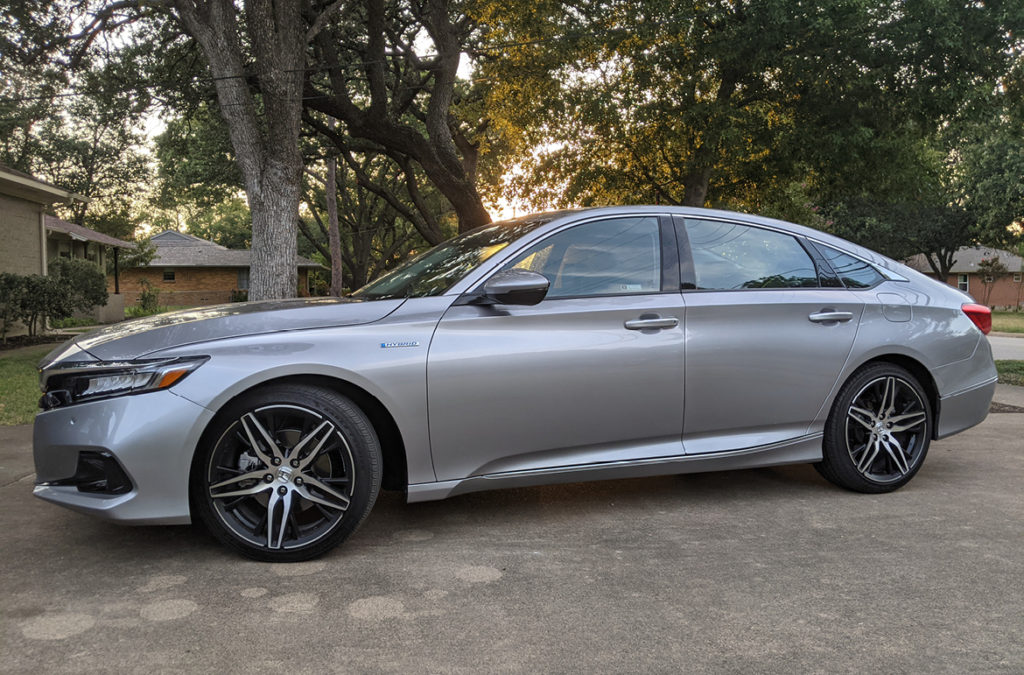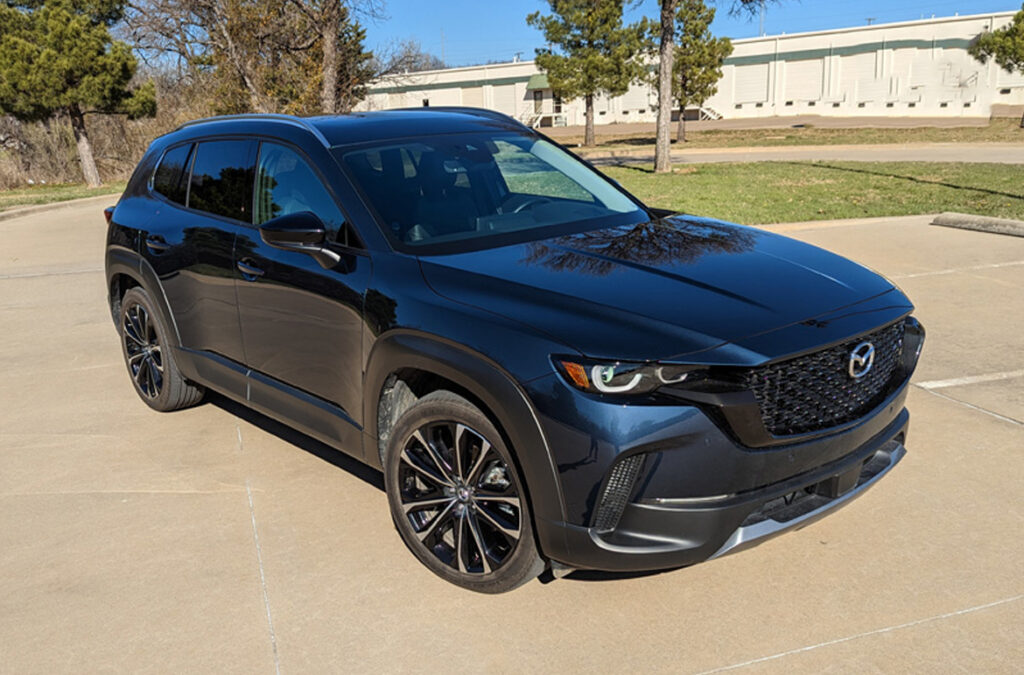
This is America, where we like our vehicles rugged and ready for adventure at a moment’s notice. Or at least that’s the persona of the American driver that modern media and pop culture help to convey. Whether or not that’s an accurate portrayal, automobile manufacturers are buying into the idea and catering directly to Americans. Mazda is now one of those companies, a Japanese automobile manufacturer that has had tremendous success here in the United States with its trend-setting crossover SUVs. Their SUVs have become so popular, in fact, that their top-selling version, the CX-5, now has its own US version: the all-new CX-50.
It looks a lot like the CX-5, but there are some important differences that make the CX-50 uniquely suited for a US audience. But are the differences enough? Are they worth the higher price point? And in typical American fashion, does adding a 0 at the end of the name make it “bigger and badder?” These are all good questions and immediately remind me of something my Dad used to say: “The answer is in the doing”
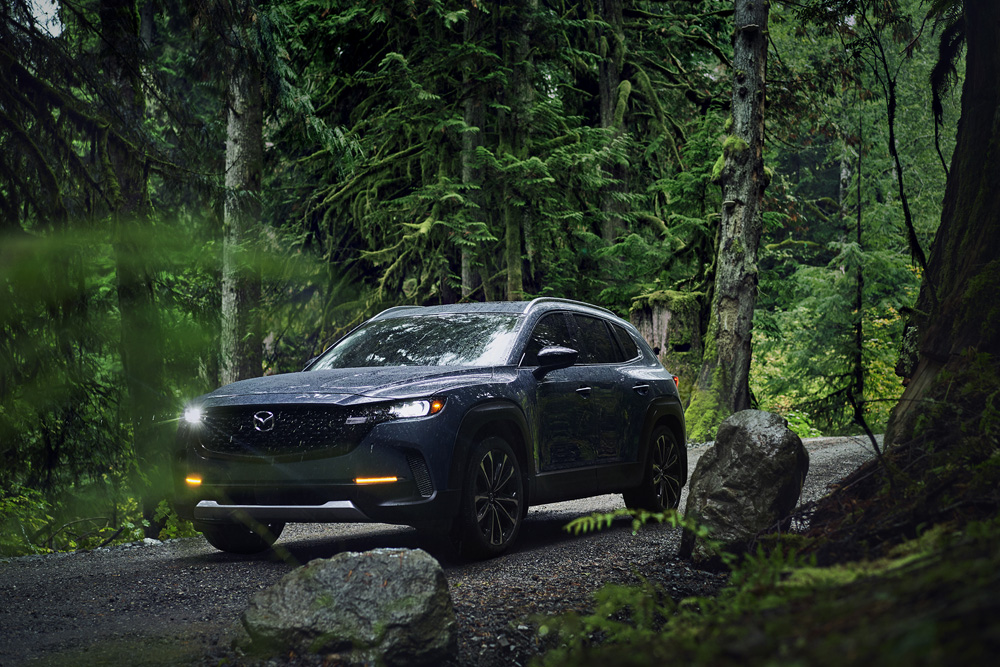
What This Dad Digs about the 2023 Mazda CX-50 Turbo
Made in America – We are the land of dreams and opportunity. But mostly, we want to go off-road. Or at least that’s what Mazda designed the CX-50 to do. Fair warning, I only attempted a light amount of off-roading, mostly because this still feels like a vehicle should mostly remain on the road. Instead, a more accurate way of looking at the CX-50 is as an adventuring vehicle. You can “adventure” to the grocery store in it, but you can also strap a kayak to the roof rails and head out to the lake.
That’s perhaps the biggest difference between the CX-5 and the CX-50; the latter is built to go the extra mile and allow the driver to tackle more adventurous outings. It has a wider stance, a high ground clearance, and a raised suspension. There are lots of bold new design elements as well, but we’ll get to that later. Perhaps one of the more interesting aspects of the CX-50 is that it’s built entirely in the U.S. of A. It’s the first Mazda vehicle to come out of the Huntsville, Alabama plant, where Toyota is also producing vehicles. You won’t be entirely “buying American” when opting for a CX-50, but lots of American craftsmanship will be going into its production.
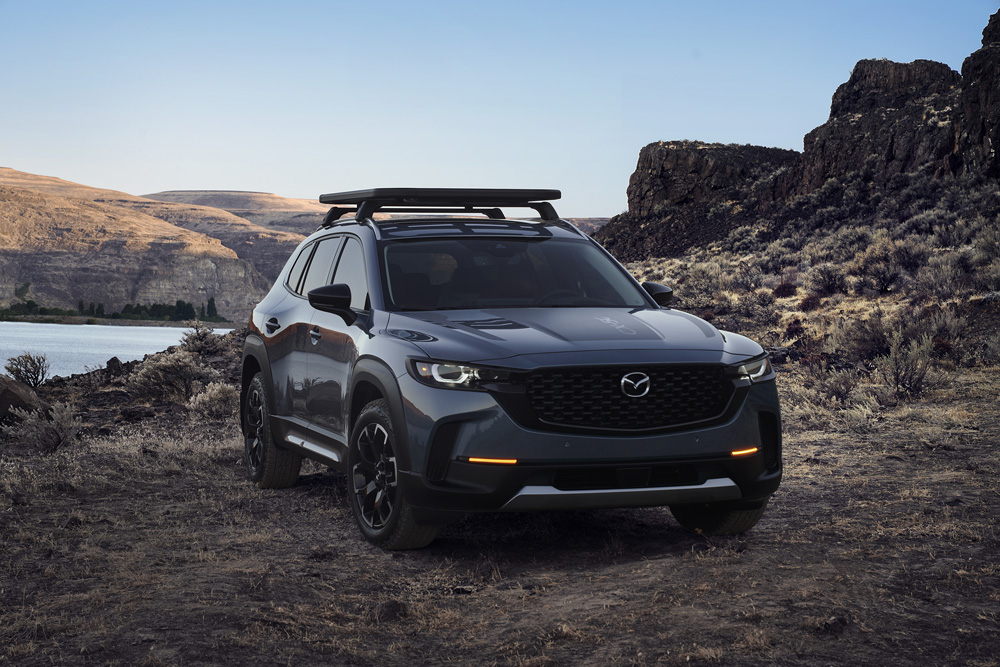
Rugged for American Tastes – Thankfully, Mazda didn’t take the whole “rugged” angle and run too wild with it. Instead, Mazda found ways to artfully integrate rugged-type features into their already gorgeous CX-5 design. It’s immediately noticeable from the onset – the exterior is blocky, especially around the edges like the roofline and wheel wells. It’s long and angular like the CX-5, but the CX-50 squares off at the ends, and it’s admittedly a nice effect. It loses a tiny bit of that Mazda sleekness in doing so, but this CX-50 looks tougher in exchange. I dig it.
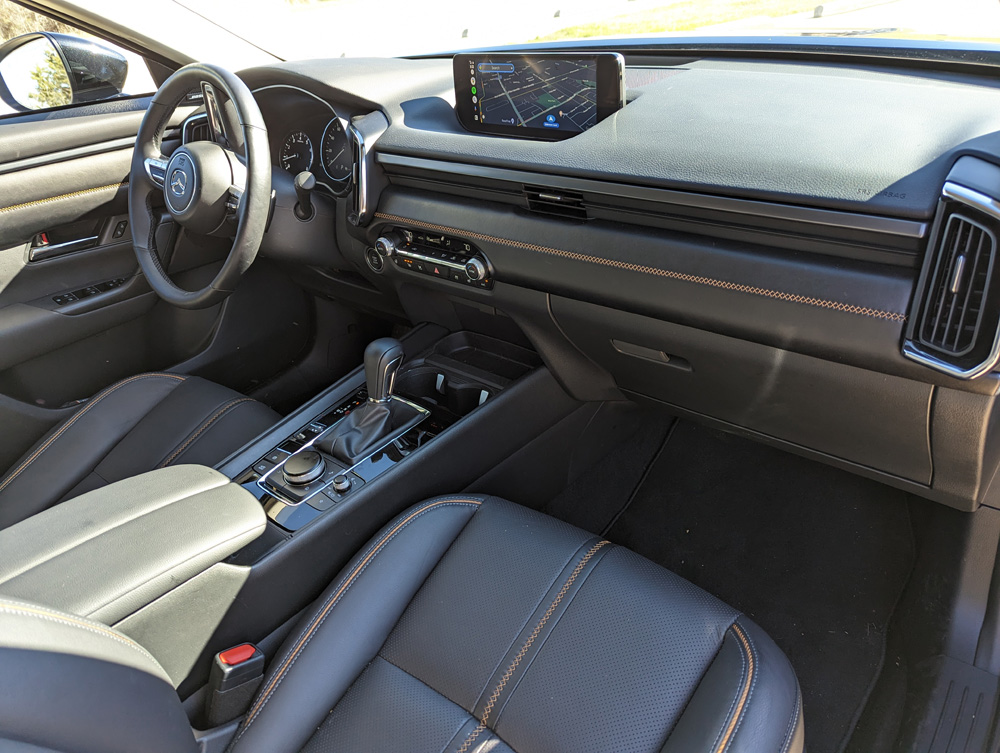
The ruggedness extends to the interior as well, although in a less dramatic fashion. Interior design still hinges on minimalism, but again, there is a blocky nature to the edges. The effects are small and subtle, like the air vents, for example, they are much more squared off than the CX-5 version. I was worried that Mazda would deviate from their luxurious interior design, but they wisely stuck with what works. I do, however, with the wider stance added more hip room in the driver and passenger seats – both feel as snug as ever.
Still Zoom-Zooming – Mazda has always touted its philosophy of connecting the driver with the movement of the vehicle, and thankfully nothing has changed in the CX-50 experience. Under the hood, the CX-50 Turbo is powered by a turbocharged 2.5-liter four-cylinder engine that produces 256 horsepower and 320 lb-ft of torque. This engine is paired with a six-speed automatic transmission, sending power to all four wheels, which helps in hauling a little extra weight. The CX-50 Turbo is just as nimble and responsive as the CX-5, although I was expecting a little more power in the lower gears from a turbocharged engine. Once it’s climbed the gears, the CX-50 offers a smooth and confident drive – yet another shining example of Mazda’s ability to create a finely tuned machine.
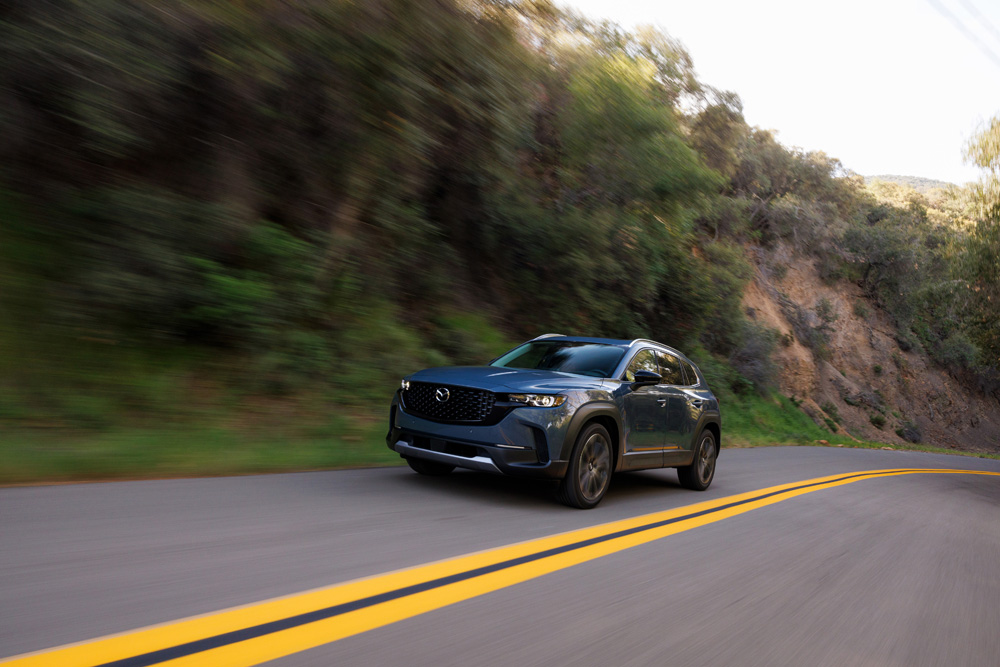
Additional Cargo Space – The CX-50 is slightly larger, so that means extra cargo space over the CX-5. I mentioned earlier that the hip room for the driver and passenger is not drastically different over the CX-5, but on the plus side, the seating positions are more upright, allowing for more room in the rear. Behind the rear seats, the CX-50 offers 31.4 cubic feet of cargo space – plenty of room for strollers, groceries, or smaller adventure equipment. Fold those rear seats down, and you get a total 56.3 cubic feet. Lots of room to play with if you can spare those two-rear seats.
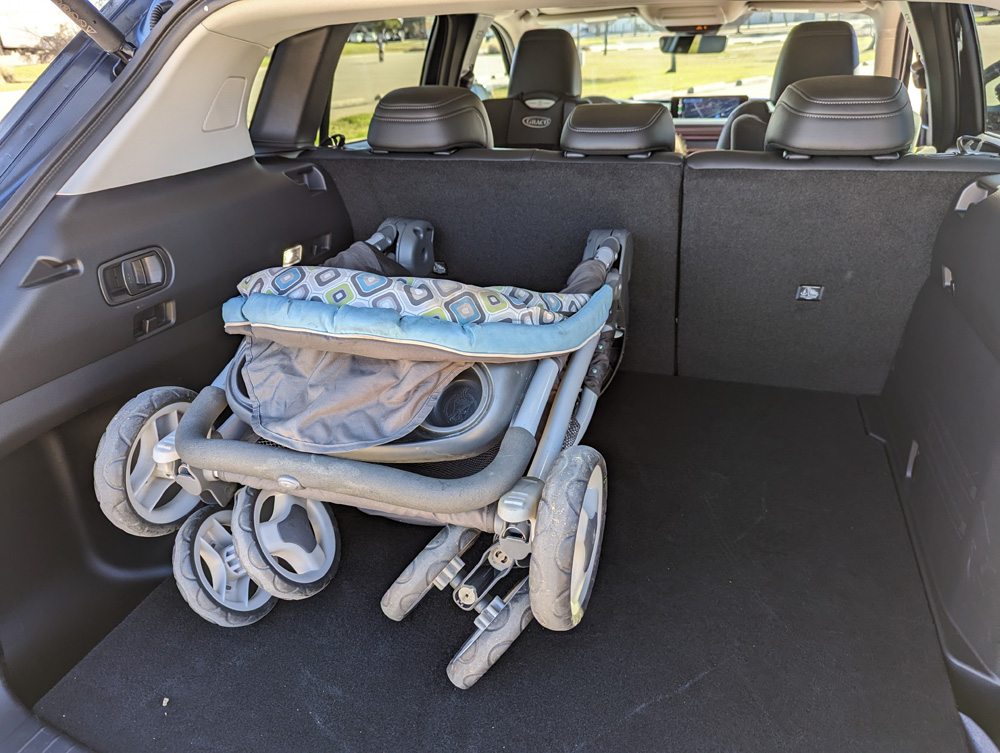
Safety Features still in tow – Mazda does an excellent job of implementing proven safety features into their vehicles, and those carry over nicely into the CX-50. Safety-conscious Dad and Mom drivers will be glad to hear that Mazda’s suite of safety features comes standard on the CX-50, including forward collision warning with automatic emergency braking, lane departure warning, and blind spot monitoring. Mazda’s widescreen 10.25-inch infotainment screen might not be the most ideal screen for a back-up camera, but I grew accustomed during my week with the CX-50.

What Gets this Dad’s Downvote in the 2023 CX-50 Turbo
Infotainment Burnout – I’m certainly a fan of Mazda’s minimalistic design aesthetics, and I’ve long been a proponent of their controller knob in the center console used to navigate the infotainment screen. But, minimalism can only go so far. Case in point, Mazda’s infotainment software. The user interface feels appropriate in the CX family, but compared to the competition, it’s beginning to feel boring. Navigating the menus is not intuitive, and you’ll find that there isn’t enough information on that 10.25 widescreen infotainment screen, thus making for a clunky experience to find what you’re looking for. I appreciate that UI compliments the interior design, but too often, it felt like I was being served “caviar” when all I wanted was a greasy hamburger.
Gas Snob – Apparently, the CX-50’s turbo engine can produce 69 more horsepower if it’s running on premium gasoline. That’s all well and good, but have you seen the price of premium gas lately?
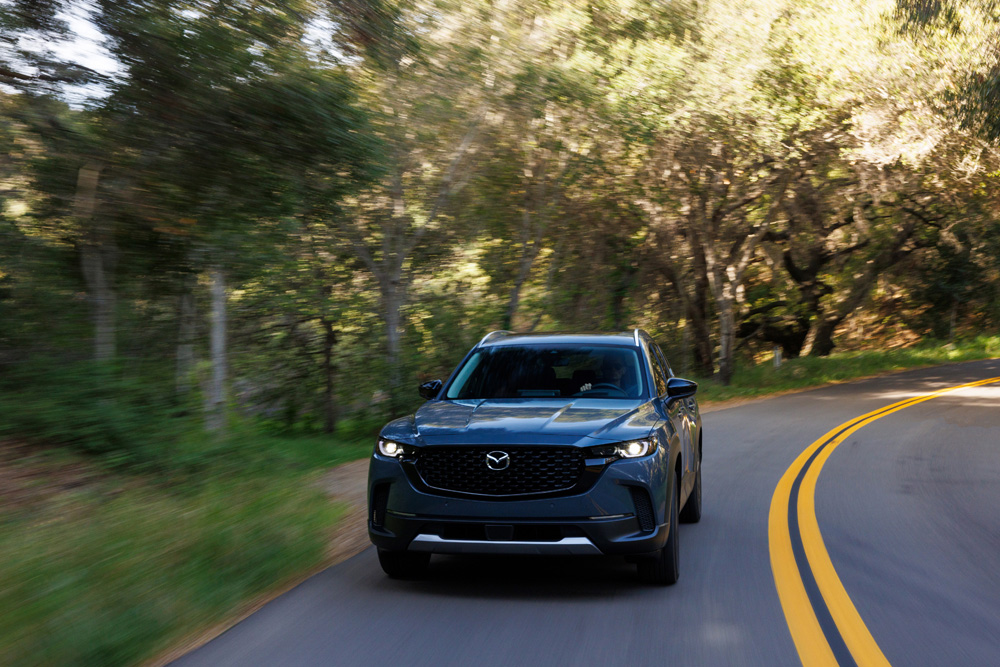
Adventurous mode means adventure price – The base price for the CX-50 starts at $28,925 – which includes the nifty safety features but not many of the frills that make the vehicle a creature comfort haven. There are lots of preferences in trim level, but the edition we tested is the most expensive: the 2.5 Turbo Premium Plus. That model starts at $43,675. It’s got all the bells and whistles you could ask for, but at that price, most shoppers can get a larger vehicle with more cargo space. If the engine was a bit more fierce or if there were some more aggressive off-roading capabilities, this price might be easier to swallow.
Weird question: Is it “American” enough?
It’s obvious that Mazda is aiming for the adventure-seeking driver with the CX-50, and there are many reasons why this vehicle deserves your attention over alternatives like the Toyota RAV4 or the Honda CR-V. But does it differentiate itself from the CX-5 enough? And an even more awkward question is: is it “American” enough? Off-roading, thrill-seeking American drivers have proven that they like big, bulky, and sometimes brash vehicles. The CX-50 certainly offers a more sophisticated alternative, but it also relies on the posher stylings the brand is known for. American drivers are a lot of things, but sophistication isn’t always one of them.

Still, as a country, we’re becoming savvy, educated drivers who realize that there are a variety of choices in vehicles that can meet our specific needs. The CX-50 stands out and is indeed different but not different enough to be something totally new that the consumer has to wrap their head around. And that might just be the best thing about it. The CX-50 is familiar and comforting, especially if you are a Mazda fan. It embodies some of the best elements of the Mazda brand, but it’s a tad tougher and made right here in America. You might say it’s the American dream: the combination of foreign engineering with American design elements, existing right here on our roads.
Phillip is a filmmaker, an award-winning playwright, screenwriter and craft beer aficionado. He writes about cars, car tech, and various other cool Dad things. He lives, works and plays in Dallas, Texas.


